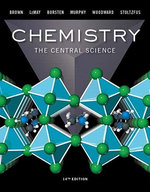?A four-coordinate complex \(\mathrm{MA}_{2} \mathrm{~B}_{2}\) is prepared and found to have two different isomers. Is it possible to determine from th
Chapter 23, Problem 23.41(choose chapter or problem)
A four-coordinate complex \(\mathrm{MA}_{2} \mathrm{~B}_{2}\) is prepared and found to have two different isomers. Is it possible to determine from this information whether the complex is square planar or tetrahedral? If so, which is it?
Text Transcription:
MA_2B_2
Unfortunately, we don't have that question answered yet. But you can get it answered in just 5 hours by Logging in or Becoming a subscriber.
Becoming a subscriber
Or look for another answer
